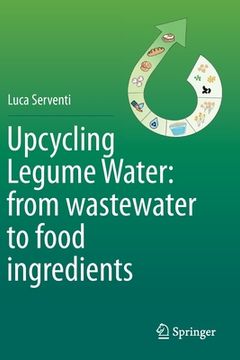Share
Upcycling Legume Water: From Wastewater to Food Ingredients (in English)
Luca Serventi
(Author)
·
Springer
· Paperback
Upcycling Legume Water: From Wastewater to Food Ingredients (in English) - Serventi, Luca
$ 104.20
$ 109.99
You save: $ 5.79
Choose the list to add your product or create one New List
✓ Product added successfully to the Wishlist.
Go to My WishlistsIt will be shipped from our warehouse between
Friday, July 05 and
Monday, July 08.
You will receive it anywhere in United States between 1 and 3 business days after shipment.
Synopsis "Upcycling Legume Water: From Wastewater to Food Ingredients (in English)"
Food manufacturing generates an incredibly high volume of wastewater. The legume industry is one of the top contributors to this environmental issue, as soaking and boiling are necessary to transform dried legumes into cooked canned products and other legume-based products, such as soymilk, tofu, hummus and flours. Wastewater must be treated prior to disposal into the environment, thus raising production costs for the food industry. In addition, wastewater contains nutrients that are lost from the food chain after disposal. As water and soluble nutrients are becoming a limited resource, it is critical to optimize food manufacturing at all levels. Recycling Legume Wastewater Into Food Ingredients presents a sustainable solution to this increasing demand for food and water. The text analyses the composition of legume wastewater and its physicochemical properties, including its potential applications in emulsifiers, foaming agents, gelling agents and antistaling ingredients. Early chapters discuss the processing of legumes and the wastewater generation involved. Further sections focus on wastewater generated by soaking and cooking, including the composition, functional properties, and food applications involved in each. Sprouting water, bioactives and applications in edible packaging are also discussed. In presenting a sustainable solution for legume wastewater use, this text is an important key to sustainability in food processing and the reduction of waste.
- 0% (0)
- 0% (0)
- 0% (0)
- 0% (0)
- 0% (0)
All books in our catalog are Original.
The book is written in English.
The binding of this edition is Paperback.
✓ Producto agregado correctamente al carro, Ir a Pagar.

